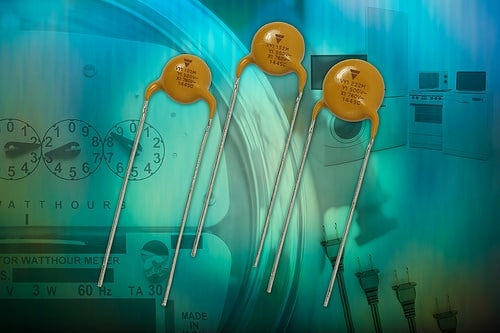source: Sat Press Releases news
MALVERN, Pa., Feb. 06, 2017 — Vishay Intertechnology, Inc. (NYSE:VSH) today announced that its VY1 Compact series of AC-line-rated ceramic disc safety capacitors is now qualified to the “biased 85/85” accelerated life test. Providing extraordinary reliability for Class X1 (760 VAC) and Y1 (500 VAC) applications, the Vishay BCcomponents devices are the industry’s first to offer high pulse strength up to 10 kV while withstanding a temperature of 85 °C and relative humidity of 85 % at rated voltage for 1,000 hours.
Standard X1- and Y1-rated ceramic safety capacitors are tested at a temperature of 40 °C and relative humidity of 93 % per IEC 60384-14.4, the international standard for capacitors used in electronic equipment. While complying with IEC 60384-14.4, the more stringent humidity testing of the VY1 Compact series devices allows them to provide superior reliability and longer lifetimes than their standard counterparts.
Featuring Y5U ceramic dielectrics and diameters down to 7.5 mm, the space-saving capacitors are optimized for RFI and AC line filtering applications in power supplies, power and smart meters, white goods, industrial equipment, and consumer electronics. The devices offer a capacitance range from 470 pF to 4700 pF — with tolerances of ± 20 % — over a temperature range of -40 °C to +125 °C.
VY1 Compact series capacitors consist of a copper-plated ceramic disc with tinned copper-clad steel connection leads offering 0.6 mm diameters. The devices are available with vertical (inline) kinked leads or straight leads with spacing of 10 mm or 12.5 mm. The RoHS-compliant, halogen-free, and Vishay Green capacitors feature an encapsulation made of flame-resistant epoxy resin in accordance with UL 94 V-0.
Samples and production quantities of the enhanced VY1 Compact series are available now, with lead times of six to eight weeks for larger orders.
































